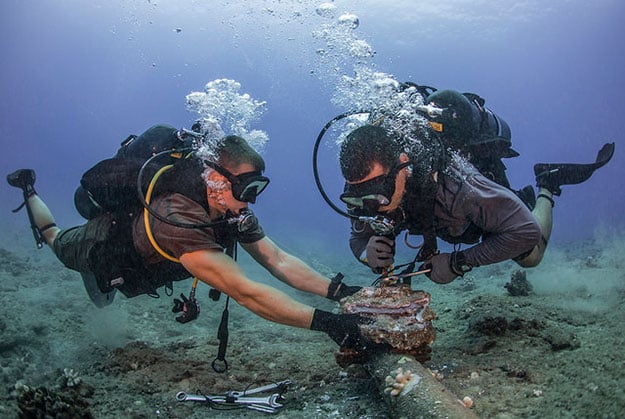Google Building Three New Undersea Fiber Optic Cables To Expand Cloud Services

Try wrapping your head around this one—Google is diving under water in order to build a bigger cloud for land dwellers. It's not actually as confusing (or ironic) as it sounds. Google has already helped built three undersea fiber-optic cables, and now it plans to add three more, which will both speed up data transfers to certain reasons and offer alternative routes when data fails in other areas.
It will cost Google hundreds of millions of dollars and take more than a year to lay the new cables. It's a big investment, though a drop in the bucket compared to the $30 billion Google has spent to date on improving its infrastructure over the past three years. That includes money spent on both data centers and subsea cables, all in an effort to connect the world and expand its cloud play.
Starting in 2019, the first of the three cables is a private cable called Curie that will connect Chile to Los Angeles. A second consortium cable called Havfrue will the United States to Denmark and Ireland, while a third consortium cable that is part of the Hong Kong-Guam Cable system will connect major subsea communication hubs in Asia.
"Together, these investments further improve our network—the world’s largest—which by some accounts delivers 25 percent of worldwide internet traffic. Companies like PayPal leverage our network and infrastructure to run their businesses effectively," Ben Treynor Sloss, vice president of Google's cloud platform, said in a blog post.
Google named its Curie cable after renowned scientist Marie Curie. With Curie, Google becomes the first major non-telecom company to build a private intercontinental cable. Google sees some distinct benefits in going the private route, such as being able to control the design and construction process, and fully defining the cable's technical specifications. And once deployed, Google will be in a better position to make routing decisions based on latency and availability.
"Curie will be the first subsea cable to land in Chile in almost 20 years. Once deployed, Curie will be Chile’s largest single data pipe. It will serve Google users and customers across Latin America," Sloss added.
The investment in new undersea cables will also bolster Google's efforts to compete with Amazon (AWS) and Microsoft (Azure) in the competitive cloud space.
Top Image Source: Flickr via US Navy


